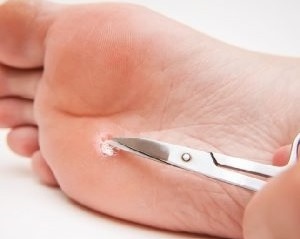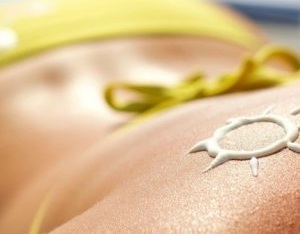Warts are not only unpleasant skin defects, but also complex diseases that require comprehensive treatment. The root cause of papilloma hyperplasia is the dormant virus in the human body. Laser wart removal is a safe modern method. It is used all over the world: fast healing and minimal risk of recurrence allow you to eliminate warts in children and adults without any consequences.
Modern methods for removing warts
Reduced immunity is a prerequisite for the appearance of warts. The rapid growth can form an entire cluster. Through contact with patients or through their personal belongings, you may be infected with papillomavirus-the underlying cause of the disease. Whatever the cause of the wart, it must be addressed. The first step in a comprehensive treatment is to remove all formations on the skin.
Modern methods of removing warts include radio waves and laser removal. Destroying tumors on the skin with a laser is the easiest and most painless process to ensure stable results. Use local anesthesia for minor operations without additional long-term preparation. In a professional office, only experienced doctors can carefully remove scales. The stage of the procedure and the qualification of the doctor can guarantee that the disease will not recur in the near future.
What kind of warts were removed with laser?
The appearance and location of papilloma on the human body may be different. Warts can affect the arms, legs, back and face of adults and children. There is no age limit for patients with papillomatosis. With laser therapy, plantar warts can be removed. These are vegetations on the feet, which develop in the horny part of the skin. After delamination, the dead skin becomes sealed with a visible transparent core in the center.
Laser is used to remove common warts: the growth of dense, round structures. These warts are different from the skin tone (they are darker). Over time, common warts increase in size and are annoying: they can cause serious discomfort and sometimes injury.
Laser therapy is used to remove flat warts. The size of the small stratum does not exceed 1 cm, and the growth is flat, which looks like skin-colored nodules from the side. Flat warts do not rise much above the skin and rarely cause discomfort. Before prescribing laser technology to remove deposits, make sure an accurate diagnosis-check for warts and their types.
Benefits of the process

During the initial examination, it is necessary to determine the status of the tumor. If it is not cancer, it can be removed using a modern method. If we are talking about warts on the feet, they are removed in several stages-this form usually has rods that grow in soft tissues. Warts on the feet will continue to hurt and cause discomfort when walking. Only with the help of the laser method, the removal of these warts is carried out in one stage, which allows you to recover quickly after the operation.
If there is no subsequent recurrence, it is difficult to remove the root calluses: simple surgical resection is ineffective. Laser therapy helps to eliminate all virus-infected cells, even cells that are invisible to the naked eye.
The advantages of laser treatment include: operation speed and recovery speed. In general, depending on the complexity of the tumor and the number of warts, it takes no more than half an hour to remove the growth. The minimum number of contraindications makes laser treatment universal and safe for children. It is allowed to perform the procedure from 5 years old.
The painlessness of the procedure is suitable for allergy sufferers: use a small amount of medicine and painkillers to remove warts.
After laser treatment, there are almost no scars or hard scars in the affected skin area. Compared with other modern technologies, the main advantages of this method are quick recovery and fewer complications. Innovative equipment can perform micro-surgery without causing discomfort to the patient. The patient's recovery is carried out at home under his usual circumstances.
Contraindications for this process
There are many contraindications to effective techniques. To prepare for minor surgery, the patient needs to undergo a thorough physical examination. Based on the results obtained, the attending physician evaluates the patient's further treatment and risks.
Contraindications of laser therapy:
- Skin rash and herpes;
- Late dermatitis;
- Hypertension;
- Acute respiratory disease (the patient's immune system is weakened after a previous illness);
- Malignant disease.

Pregnant women should refuse the procedure: if possible, postpone laser treatment until postpartum. If a rash of unknown origin occurs on the human body, the removal of the wart must be delayed. Systemic disease is a direct contraindication to microsurgery.
Thyroid disease rules out the use of laser beams to remove uncomfortable warts. Allergy to the sun is a rare disease and laser surgery is not allowed: in this case, radio wave therapy is used to fight warts.
Severe renal and liver insufficiency is a contraindication to mini-surgery. Before using modern technology, it is necessary to consider all contraindications that may cause serious complications in adults or children.
How to perform this process
The process is performed under sterile conditions. Previously, patients received blood and urine tests. Based on the results obtained, determine the type of anesthesia used and the analgesics needed during laser treatment. The non-invasive method excludes any contact with the skin: the person sits on a comfortable sofa in a lying or sitting position. Inject the medicine into the side of the wart. This will relieve the pain.
After 5-10 minutes, the injected medicine will take effect. The laser beam will affect the concentration for several minutes. After the operation, the affected part of the skin is treated with a special method and bandaged.
The half-hour operation does not require the patient to be hospitalized: after the laser treatment, the patient goes home immediately.
Skin care and re-dressing at home. During the operation, the possibility of bleeding was completely ruled out. If there are no cuts on the skin, infection or pathogenic microorganisms cannot penetrate the wound, it does not include secondary infections after surgery.
Rehabilitation after laser removal
The healing of the skin area affected by warts directly depends on the process performed. The high-tech laser is completely sterile (sterilizing). It can work on the skin without causing inflammation-therefore, it does not leave scars or visible scars on the body. In the area treated by the laser, the bacterial or viral pathogens are completely destroyed. After the operation, you may feel some discomfort under the bandage, and this discomfort will soon disappear.
The skin is fully restored within 2 weeks (for people with weakened immunity, up to a month). Formation of a crusty skin on the treatment site: healing occurs underneath it. Once the lower skin heals, the outer shell will fall off without further damage.
The crust lasts for about 10 days and will not cause any discomfort to the human body. New skin appeared in the third week after the operation.
Home Care
Home care includes regular skin care. The patient treats the crust and surrounding skin with disinfectant. Never tear or soak the shell-it can protect new skin.
Fungal infection or infection may occur due to accidental injury. As a result, the wound cannot heal, and new warts will appear soon.
Don’t tan until new skin appears: Don’t expose the shell to ultraviolet light. During the recovery period, you should not visit the sauna or solarium. Does not include exploration pools or open waters. The use of cosmetics for skin treatment after laser treatment is not allowed.
Alcoholic products that dry out the shell are harmful to the skin. The patient's behavior after laser removal of deposits determines the speed of its recovery.














































































